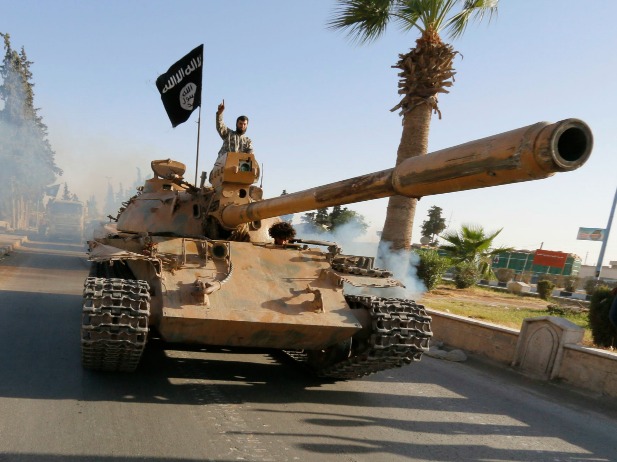Project Description
Copyright: Defense in Depth, Council on Foreign Relations. With Janine Davidson.
Amid dangerous escalation in eastern Ukraine following the MH17 tragedy and a widening war in Gaza, it’s easy to dismiss last month’s lightning offensive into Iraq by the Islamic State in Syria and Iraq’s (ISIS) as “old news.” Unfortunately, as global attention has shifted elsewhere, ISIS has only grown more virulent. The self-proclaimed caliphate has redoubled its efforts in Syria, launching a series of unprecedented offensives last week that now leave it in control of 35 percent of Syrian territory and nearly all of Syria’s oil and gas fields. The tumor is growing.
ISIS has shown remarkable military capability. A full-fledged July 21 counterattack by Syrian government troops failed—on two fronts—to reverse ISIS’ gains. Indeed, as Brett McGurk, the State Department’s deputy assistant secretary for Iraq and Iran, stated in Congressional testimony on July 23, “ Meanwhile, these gains from Syria are being used to bolster the war effort in Iraq. As McClatchy reports: The capture of nearly all Syria’s oil and gas has proved a financial bonanza for the Islamic State, which appears to be trying to win the hearts and minds of Iraqis and Syrians by guaranteeing low oil prices. The Syrian Observatory for Human Rights, a London-based anti-government group, said fuel tankers with Iraqi license plates and driven by Iraqi nationals have entered Syria and reached Al Omar oilfield near Deir el Zour in the last few days, waiting to be filled with oil before they return to Iraq through the territory controlled by the Islamic State. The observatory said the group is selling oil to Syrian dealers for $12 a barrel, on the condition that those dealers sell them for no more than $18 a barrel to civilians, in an attempt to win support from people living in territories under its control. That’s not all. As cities fall more firmly under ISIS’ grasp, the jihadists attempt to govern. They are building and running schools in Syria and delivering “justice” across the Levant. As the New York Times reports, the result is a mix of public executions and imposition of harsh religious law, supported by a surprising level of order. While ISIS has “removed” old leaders from their positions of power, it has made a practice of compelling mid-level bureaucrats and technocrats to stay through the change in management. As a result, ISIS rule has not been as disruptive as some analysts thought—so long as citizens do what the “caliphate” says. In Iraq, things are a mess. Government forces have seen little progress in winning back territory. On July 10, ISIS ambushed and captured an Iraqi armor convoy, including several U.S.-made and donated M1A1 main battle tanks. On July 21, the Iraqi ambassador to the United States called for U.S. air strikes against ISIS positions. Meanwhile, according to updated monitoring by the Institute for the Study of War, ISIS continues to close off vectors into Baghdad. ISIS now controls a volume of resources and territory unmatched in the history of extremist organizations. It possesses the means to threaten its neighbors on multiple fronts, demonstrating a military effectiveness much greater than many observers expected. Should ISIS continue this pattern of consolidation and expansion, this terrorist “army” will eventually be able to exert a destabilizing influence far beyond the immediate area. For now, serious options for the United States remain limited. A decapitation strike targeted against ISIS leader al-Baghdadi could fragment the organization—but he still remains a very elusive target. There are signs that Iraq’s moderate Sunnis are cooling to ISIS rule, but it’s unclear what effect this might have in stemming ISIS’ gains, or how capable they could be in routing ISIS by force. Overall, news from the region is grim. ISIS is in the process of evolving from jihadi network to outlaw state. Meanwhile, the unprecedented number of foreign fighters who have streamed to Iraq and Syria—some 3,000 of whom have Western passports—will bring their newly tempered ideology and combat experience with them when they return home. As ISIS turns increasingly to the task of governing, internal pressures on the organization will grow considerably. The uneasy coalition will be strained; damage done to local civic infrastructure and institutions will take its toll. Yet the atrocities committed in ISIS-occupied territory, terrible now, will likely get worse. In this case, simply “waiting it out” might be a viable strategy, perhaps leaving the work of direct intervention to Iran. After all, Iran has plenty of reasons of its own to stymie ISIS’ spread. But is this a strategy the United States can—or should—accept?

